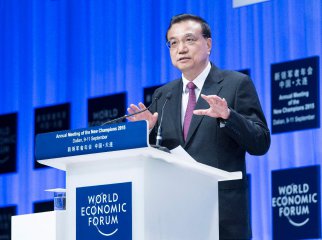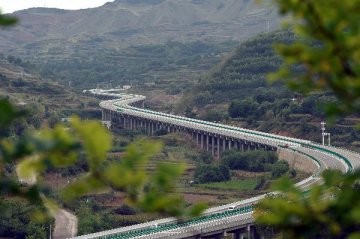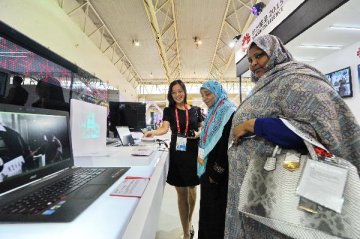
China's slowing power consumption and falling railway freight are signs of progress in economic restructuring, rather than evidence of failing industry, the statistics chief said on Thursday. Power use and rail freight are two major advanced indicators used to analyze the Chinese economy. This year's lackluster data have sparked worries about growth momentum in the broader economy.
Wang Baoan, director of the National Bureau of Statistics (NBS), dismissed concerns in an article published on the People's Daily, saying the two indicators signaled a stronger service sector and a more efficient and environmentally friendly growth model. In the first eight months, total electricity consumption edged up just 1 percent year on year, down from a 4-percent increase a year ago. Wang attributed the falling growth rate to the rise of tertiary industry, which is much more efficient in electricity use.
"China is promoting an economy led by the service sector, rather than traditional engines like manufacturing," Wang said. "The service sector's electricity consumption per unit of output only accounts for less than 20 percent of that of secondary industry." In 2014, the sector's contribution to the gross domestic product (GDP) rose to 48.1 percent from 44.2 percent in 2010, which prompted China's power use per unit of GDP to decline 5.4 percent in the period, the NBS data showed.
Given looming downward pressure, the government is counting on the sector to develop into a new economic driver. In contrast with slack manufacturing, the sector grew 8.4 percent from a year ago in the first half and contributed up to 49.5 percent of GDP. The slowing electricity consumption is also a result of an improved energy consumption structure, government efforts to cut emissions and upgrade technology, and cleaning up energy-intensive industries, such as mining, iron and steel, Wang said.
Another indicator, China's railway freight, suffered from a sharp drop in the first eight months, slumping 10.9 percent from a year ago. But Wang does not believe the decline suggests gloomy economic prospects, saying it was mainly triggered by a slip in coal and steel, which account for much of China's railway freight, as the country uses more clean energy. China is weaning itself from coal and turning to cleaner alternatives to fuel its economic engine.
From 2010 to 2014, coal's share in total energy consumption descended to 66 percent from 69.2 percent, while clean energy, including hydropower, nuclear power, wind power and natural gas, rose to 16.9 percent. Wang said at the end of the article that the two economic indicators should be interpreted in a new light as the economy adjusts to a "new normal" period of slower but higher quality growth. China's economic growth slowed to 7 percent in the first and second quarters of 2015, the lowest quarterly growth rate since 2009.























Latest comments